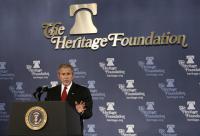-
Keeping pace with the fast-developing science of gene drives
The emerging science of gene drives is drawing attention for its potential to help with critical health issues such as mosquito-borne diseases and environmental concerns such as agricultural pests and invasive species. At its most basic, a gene drive operates outside the traditional realm of genetics, in which an offspring has a 50-50 chance of inheriting a trait from one of its parents. A gene drive introduces a trait that will spread — or drive — through a population. “The science of gene drives is moving very fast,” says an expert. “[O]ur ability to assess the risks of gene drives, to oversee them with regulatory agencies, and to have a public discussion around gene drives is falling behind the science — We don’t want to wait until we have the technology in front of us to have discussions about regulation, oversight, ethics, and engagement.”
-
-
New Prize in Food and Agriculture Sciences announced
The National Academy of Sciences announced the creation of a new prize, the NAS Prize in Food and Agriculture Sciences, to be presented annually beginning in 2017 with an award of $100,000. The NAS Prize in Food and Agriculture Sciences will recognize research by a mid-career scientist at a U.S. institution who has made an extraordinary contribution to agriculture or to the understanding of the biology of a species fundamentally important to agriculture or food production.
-
-
Three ways synthetic biology could annihilate Zika and other mosquito-borne diseases
There are tried and tested approaches in the arsenal of weapons against the mosquito-borne disease, but to combat Zika and other mosquito-borne disease, more is needed. Gene drives, synthetic biology-based genetic engineering techniques, offer one solution by reengineering mosquitoes or obliterating them altogether. Yet we still have only the vaguest ideas of how the systems we’re hacking by using gene drives actually work. It’s as if we’ve been given free rein to play with life’s operating system code, but unlike computers, we don’t have the luxury of rebooting when things go wrong. As enthusiasm grows over the use of synthetic biology to combat diseases like Zika, greater efforts are needed to understand what could go wrong, who and what might potentially be affected, and how errors will be corrected.
-
-
Gene-drive modified organisms not yet ready to be released into environment: Scientists
The emerging science of gene drives has the potential to address environmental and public health challenges, but gene-drive modified organisms are not ready to be released into the environment and require more research in laboratories and highly controlled field trials, says a new report from the National Academies of Sciences.
-
-
Do think-tanks matter? Expert says “think again”

A recently published study found that public sector workers judged studies and reports generated by scholars affiliated with universities to be more credible than reports or studies purported to be from a think-tank or advocacy group.
-
-
DHS report highlights R&D priorities for technologies used in the field

The Department of Homeland Security has released the Integrated Product Teams for Department of Homeland Security R&D Fiscal Year 2016 Report. The report identifies twenty-four focus areas for technological research and development (R&D), which fall under five mission areas: aviation security, biological threats, border security, cybersecurity, and counterterrorism.
-
-
U.S. R&D increased in 2013, ahead of the pace of gross domestic product
U.S. expenditures in research and development (R&D) rose to $456.1 billion in 2013 — a $20.7 billion increase over the previous year, according to a report from the National Science Foundation. The R&D system in the U.S. includes multiple performers, including businesses, the federal government, non-federal government, universities and colleges, and other nonprofit organizations.
-
-
U.S. science and technology leadership challenged by advances in Asia
According to the latest federal data, the U.S. science and engineering (S&E) enterprise still leads the world. The United States invests the most in research and development (R&D), produces the most advanced degrees in science and engineering and high-impact scientific publications, and remains the largest provider of information, financial, and business services. However, Southeast, South, and East Asia continue to rapidly ascend in many aspects of S&E. The region now accounts for 40 percent of global R&D, with China as the stand-out as it continues to strengthen its global S&E capacity. At the same time that China and South Korea have continued to increase their R&D investments, the United States’ longstanding commitment to federal government-funded R&D is wavering.
-
-
With plutonium-238 sample, ORNL restores U.S. capability dormant for nearly thirty years

With the production of fifty grams of plutonium-238, researchers at the Department of Energy’s Oak Ridge National Laboratory have restored a U.S. capability dormant for nearly thirty years and set the course to provide power for NASA and other missions. There are currently only thirty-five kilograms, or about seventy-seven pounds, of plutonium-238 set aside for NASA missions, and only about half of this supply meets power specifications. This is only sufficient to power two to three proposed NASA missions through the middle of the 2020s.
-
-
NSF awards $74.5 million to 257 interdisciplinary cybersecurity research projects
The NSF the other day announced the awarding $74.5 million in research grants through the NSF Secure and Trustworthy Cyberspace (SaTC) program. In total, the SaTC investments include a portfolio of 257 new projects to researchers in thirty-seven states. The largest, multi-institutional awards include research better to understand and offer reliability to new forms of digital currency known as cryptocurrencies, which use encryption for security; invent new technology to broadly scan large swaths of the Internet and automate the detection and patching of vulnerabilities; and establish the “science of censorship resistance” by developing accurate models of the capabilities of censors.
-
-
U.S. R&D increased in 2013, outpacing GDP
U.S. expenditures in research and development rose to $456.1 billion in 2013 — a $20.7 billion increase over the previous year, according to a new report from the National Science Foundation’s National Center for Science and Engineering Statistics. The business sector continues to be the largest performer of R&D in the United States, accounting for $322.5 billion, or 71 percent, of total national expenditures.
-
-
DHS S&T licenses third cybersecurity innovation for commercialization
The Department of Homeland Security (DHS) Science and Technology Directorate (S&T) yesterday announced that another cybersecurity technology has been licensed for commercialization. This is S&T’s third technology that has successfully gone through the Transition to Practice (TTP) program and into the commercial market. The Network Mapping System (NeMS), developed by Lawrence Livermore National Laboratory, is a software-based tool that tells users what is connected to their network so that they know what needs to be protected.
-
-
Lawmakers reintroduce “Aaron’s Law” to curb CFAA abuses
A bipartisan group of lawmakers have reintroduced a bill known as “Aaron’s Law,” which aims to reform the Computer Fraud and Abuse Act (CFAA). CFAA has been cited by civil libertarians (EFF) as having been abused to the point where it now stifles research and innovation, as well as civil liberties. the measure is intended to honor Aaron Swartz, the Reddit co-founder who was apprehended after downloading millions of scholarly articles from a Massachusetts Institute of Technology database in 2011. Following his arrest, with charges under the CFAA which might lead to a maximum sentence of thirty-five years in prison, Swartz committed suicide at age 26, leading some to charge that the aggression of prosecutors led to the his decision.
-
-
New MIT report details benefits of investment in basic research
In 2014, European researchers discovered a fundamental new particle which sheds light on the origins of the universe; the European Space Agency successfully landed the first spacecraft on a comet; and Chinese researchers developed the world’s fastest supercomputer. As these competitors increase their investment in basic research, the percentage of the U.S. federal budget devoted to research and development has fallen from around 10 percent in 1968 to less than 4 percent in 2015. A new report by MIT researchers examines how funding cutbacks will affect the future of scientific studies in the United States. The report also highlights opportunities in basic research which could help shape and maintain U.S. economic power, and benefit society.
-
-
The Brandeis program: Harnessing technology to ensure online privacy
In a seminal 1890 article in the Harvard Law Review, Louis Brandeis developed the concept of the “right to privacy.” DARPA the other day announced the Brandeis program – a project aiming to research and develop tools for online privacy, one of the most vexing problems facing the connected world as devices and data proliferate beyond a capacity to be managed responsibly.
-
- All
- Regional
- Water
- Biometrics
- Borders/Immig
- Business
- Cybersecurity
- Detection
- Disasters
- Government
- Infrastructure
- International
- Public health
- Public Safety
- Communication interoperabillity
- Emergency services
- Emergency medical services
- Fire
- First response
- IEDs
- Law Enforcement
- Law Enforcement Technology
- Military technology
- Nonlethal weapons
- Nuclear weapons
- Personal protection equipment
- Police
- Notification /alert systems
- Situational awareness
- Weapons systems
- Sci-Tech
- Sector Reports
- Surveillance
- Transportation
Advertising & Marketing: advertise@newswirepubs.com
Editorial: editor@newswirepubs.com
General: info@newswirepubs.com
2010-2011 © News Wire Publications, LLC News Wire Publications, LLC
220 Old Country Road | Suite 200 | Mineola | New York | 11501
Permissions and Policies
Editorial: editor@newswirepubs.com
General: info@newswirepubs.com
2010-2011 © News Wire Publications, LLC News Wire Publications, LLC
220 Old Country Road | Suite 200 | Mineola | New York | 11501
Permissions and Policies
